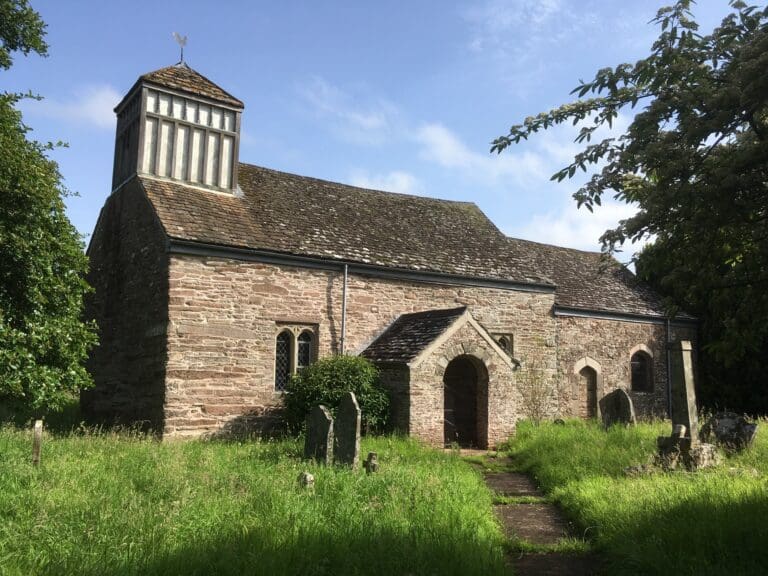
Published: 09/08/2023
Updated: 10/08/2023
Thanks to a grant from the National Heritage Memorial Fund, we will be able to save two redundant but beautiful medieval churches: St Lawrence’s in Gumfreston, Pembrokeshire and St James’s, Llangua, Monmouthshire.

We're absolutely thrilled to have been awarded a grant of £769,309 by the National Heritage Memorial Fund (NHMF). The funding makes it possible for us to rescue two medieval churches that were on the brink of dereliction.
The parish churches of Llangua in Monmouthshire and Gumfreston in Pembrokeshire have each been a part of their local landscape and community for 900 years, but both became redundant since 2020. They have been in an extremely vulnerable condition, and risked falling into ruin. Thanks to this vital funding we can now begin the extensive work to rescue and repair these remarkable medieval churches.
This grant is a life-line. It gets us 74% towards the total amount needed for these churches. Can you help us raise the remainder? You can help by becoming a member or donating towards these churches.

St Lawrence’s stands alone in a wooded valley, at an ancient site with three holy wells. It is set above the River Ritec, navigable until c.1820, and may have been built to serve the wealthy Flemish mercantile community that was settled in the region by Henry I in 1107. Its large tapering 15th-century tower would have been an important local landmark.
The belfry retains its pre-Reformation bell, cast c.1350, which could be the oldest in Pembrokeshire, and a rare 15th-century wall painting has survived in the nave, with hints that more are yet to be revealed.
Gumfreston church was declared redundant in 2021 and designated ‘at-risk’ in 2022. It has become engulfed in ivy and has suffered from long-term substantial water ingress, which has seriously damaged the roof, walls and floors, and threatens the vulnerable medieval wall paintings.
To save this church, we need to re-roof the entire building, lay new drainage and rainwater goods, stabilise the fragile wall-paintings, undertake masonry repairs throughout, and much more besides.
Without intervention, the church was declining rapidly. We are delighted to be able to pull it back from the brink.
Llangua means ‘the settlement of the church of St Ciwa’; St Ciwa was a legendary 6th-century female saint who was said to have been raised by wolves. While the dedication suggests an earlier, pre-Conquest building, the earliest parts of this charming little church date from the 12th century. Surviving features from that period include the tub font, as well as traces of a two-light Norman window. The church also retains a wonderful medieval wagon roof, dated to the late 15th century. A characterful 16th-century statue of St James rests in the south wall of the nave, and a 14th-century painted screen, possibly from Devon, depicts figures on four panels.
As well as its rich historical and architectural interest, Llangua church has an important and poignant connection with the FoFC: Our founder, Ivor Bulmer-Thomas, restored the church in 1954-5 in memory of this young wife, Dilys, who died after childbirth. Less than three years later, Ivor created the Friends of Friendless Churches. He went on to manage the rebuilding of St Andrew’s by the Wardrobe, London – which had been destroyed in the Blitz. In Ivor’s lifetime, he saved and helped hundreds of churches, a legacy that we are proud to continue. And it all started at Llangua.
St James’s closed in 2020, and is unfortunately in a dire condition, with its medieval timber roof in danger of collapse. Working with our architect, engineer, ecologist and the local authority, we are devising a repair strategy which will involve carpentry repairs of the existing timbers and the localised introduction of steelwork to support the stone roofs.
Thanks to this lifeline from the NHMF, and the efforts of numerous people who have long loved this ancient building, we are confident that “It can still be a place of sanctity, a place for spiritual and intellectual nourishment, and a place where a dispersed community comes together.” (FoFC Director, Rachel Morley)
